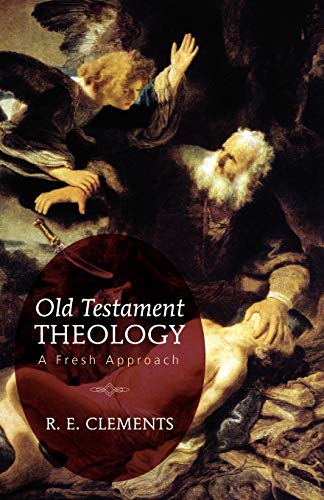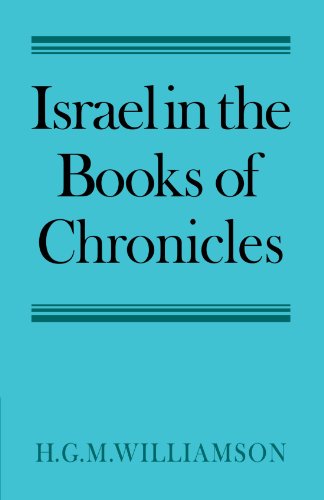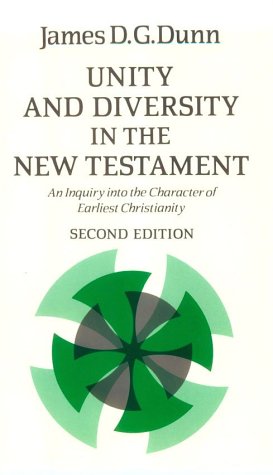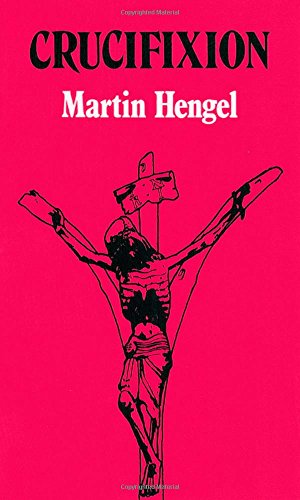Volume 5 - Issue 1
Evangelicals and theological creativity
By Geoffrey W. BromileyCreativity has come to be emphasized recently as one of the most important goals and criteria in many areas of human endeavour. Under other names it has always been highly valued. Achievements which have about them something new and fresh and original make a bigger appeal than those which are stereotyped and repetitive. A new discovery, a new style, a new idea, a new interpretation—even if such things do not always work out in practice, they all engender excitement and may well promote a better understanding.
In this significant field of originality or creativity, Evangelical theology seems to many people to be at an inherent disadvantage. By its very nature it has a commitment to the truth that has been passed on from previous generations extending back through the reformers to the early church and holy scripture. Much of its activity consists, not of pushing ahead creatively on its own, but of trying to block the path of those who wander off in creative aberration. Its fate, it appears, is to be in continual reaction against the positive actions of others. To put it in military terms, it spends its energy in defensive manoeuvres and leaves the initiative to the enemy. Ingenuity may be demanded but only the ingenuity of showing from different angles why things that have been held in the past should be maintained with very little modification in the present.
One should recognize, of course, that creativity is not to be endorsed or applauded without reservations. Indeed, in the strictest sense it might even be asked whether there really is such a thing as human creativity at all. When we speak of God as Creator, we have in mind creation out of nothing. Here is a creativity that human beings cannot achieve. They can produce things that did not exist before, but they can make them only out of things that exist already. In a world that talks incessantly of its creativity, recollection of this limitation—of the reliance of human creativity on the true creativity of God—might not be a bad place to begin.
Along similar lines, a good deal that passes for creativity proves on closer examination to fall far short of it. The saying in Ecclesiastes that there is nothing new under the sun (1:9) may not apply to absolutely everything but it applies to a large number of theological ideas. For example, the I—Thou—It analysis of Martin Buber struck the early twentieth century almost with the force of a revelation and yet the distinction between God as It and God as He/Thou had been discussed at least a hundred years before, e.g., by Friedrich Schlegel. Original thoughts both orthodox and heterodox have an uncanny knack of being ‘original’ many times in many different generations. This does not mean that all ‘creative’ writers whose thoughts have been expressed before are plagiarists. In many cases they have simply not read their predecessors. Even if they have, they undoubtedly do something by way of expansion, development, modification, or restatement. The point, however, is that creativity is in any case harder to achieve or to find than is often imagined.
Even when authentic creativity appears in theology, it may just as well be a false creativity as a true one. Indeed, there is perhaps greater scope for a false creativity. This is why creativity poses more of a problem for Evangelical theologians. False creativity arises when theology is treated as one of the arts instead of the sciences, or as one of the humane sciences instead of the divine science. In the arts especially freer rein is given to the imagination. Only the flimsiest of contact need be maintained with the original data. Face to face with a tree or a star, the artist or poet can obviously be far more creative than the botanist or astronomer. He can view and interpret as his fancy pleases whereas the scientist must engage in more precise observation, analysis, and description. Creative theology will often turn out to be merely a form of subjective impressionism in relation to its object. It may even part company with the true object altogether when it makes religious man its object instead of God. If, however, theology has the scientific task of studying God and the things of God according to God’s own self-revelation, this imaginative creativity is false. It may be authentically creative at the human level, but it is not authentically creative theology. It presents or even creates another object—its own idea or general human ideas of God instead of God. It is not theology at all.
These reservations remind us that too high hopes of creativity must not be entertained and that the easier path of false creativity must be avoided. This need not mean, however, that no place at all remains for creative work in the real theology which commits itself to the data of the divine self-revelation presented in holy scripture. Certainly we will have to curb subjectivity and exclude speculation. Theology must keep to a scientific procedure in studying and describing the data. Nevertheless, within this objective enterprise, as within all scientific endeavour, plenty of room remains for true creative activity. If, indeed, theology embraces biblical, historical and practical studies as well as the narrower doctrinal and dogmatic disciplines, the field is wide open for sober creative activity, first of all in research, but then also in interpretation and application. A little thought and a few illustrations will quickly make this apparent.
In biblical studies, for example, we confront at once a host of unfinished tasks even in the elementary research which is designed to establish what exactly the biblically reported data of revelation are. More linguistic work has still to be done in the languages of revelation and related languages over a very long historical period. Materials relating to the background of life, manners, events, and structures are still in process of discovery and stand in need of evaluation and correlation. Great strides have been made in archaeology but new evidence continues to be unearthed and scholars still have the task of weighing its bearing on the primary data. Even when linguistic, cultural and archaeological work has been done, the task of exegesis has still to be performed with the help of the steadily accumulating materials. Nor can one stop at more detailed exegesis, for the need still exists to put the results of exegesis together in the form of a connected account of the teaching of scripture (biblical theology) not merely in its constituent parts but also in its totality. Without abandoning a scientific method, without engaging in speculative flights, Evangelical scholars can display their creative gifts in the discharge of these various tasks. As they do so, they need not confine themselves to defensive reaction to speculative hypotheses but may do constructive work of their own which must eventually make a powerful impact, but which will in any case lead to a more accurate knowledge and understanding of the divine revelation mediated through the Bible.
The same obviously applies in historical studies, including dogmatic theology approached from the historical angle. Vast amounts of material now awaiting discovery and investigation can contribute directly or indirectly to a better knowledge of what has been thought, said and done through the centuries of Christian history. In this field the linguistic task may not be so demanding but the incompleteness of information on the life and contacts of many historical figures presents a challenge to creative research. History, too, has a habit of obscuring even known facts and obvious data by traditional presentations and misrepresentations, so that one can never avoid the duty of fresh historical appraisal. In some cases opponents have covered over facts with motives, as in the older Roman Catholic accounts of Luther. In others they have left only a garbled version of a person’s teaching, as in the standard accounts of Nestorius. In others again later controversialists have imported their own later concerns and made it difficult to achieve an objective understanding of what earlier authors were really saying in their own terms, e.g., in patristic statements about the eucharist. Finally admirers and followers have often developed a theology in a way that may not do justice to its original orientation so that one has to take a fresh look and ask, e.g., whether Thomas was really a Thomist, Zwingli a Zwinglian, or Calvin a Calvinist. The point is that history is so cluttered with traditional and often almost sacrosanct evaluations, backed in many instances by the authority of illustrious historians, that one can see the facts only through the spectacles of the evaluations. Quite apart, then, from the discovery of new facts, a need exists to look at existing facts in a way that is negatively sceptical but positively fresh and creative. Did this theologian really see it this way? Is this what he means in his own context? Is there something elsewhere in his works which sheds a different light on what he is thought to have said? May it be that his real thought has a special contribution of its own to make to theological understanding? These and similar questions open up at every turn, and while traditional views may often turn out to be right, and must not be rejected merely for the sake of novelty, an opportunity for creative work is clearly presented.
When it comes to interpretation, what we have in mind is not so much the interpretation of the data in and of themselves, but rather their interpretation for succeeding ages with their changing terms of reference. In the biblical field translation obviously takes the first step in this form of interpretation. The translator tries to make the original intelligible by rendering it into another language. Research into the meaning of the original, with all the accompanying linguistic, historical, and archaeological work that this involves, forms the necessary basis of this effort. But equal understanding of the new language and its background is demanded too. Nor can the work of translation be regarded as completed once and for all. New discoveries take place in the biblical field and at the same time changes constantly occur in the vocabulary, usage, and thoughtforms of the language into which translation is made. Nor is translation itself ever a simple matter of word for word rendering, for what is said in one language has to be expressed as accurately but also as naturally and idiomatically and intelligibly as possible in the other tongue. Indeed, if the message is to be properly understood, interpretation must take a step beyond translation and become exposition—the attempt to bring out in a different setting and under different influences of life and thought what precisely these translated words are all about in their own distinctive context. Just to read scripture in translation is in fact a difficult task, as one quickly sees from a study of earlier expositors who all brought their own spectacles with them and did work which was coloured by their own background. To this extent past interpretation always stands in need of scrutiny and correction, for exposition in contemporary context always tends to miss at points the real sense of the original. This work of correction, however, does not make the most serious demand. The real problem arises when it is a matter of updating the exposition in such a way that biblical truth is now expounded in one’s own contemporary context. Here is the ultimate point of exposition and here is where the risk of subtle or not so subtle misinterpretation arises with the consequent possibilities of misunderstanding. Here then, if anywhere, is the place for interpretative creativity, i.e., the development of a fully contemporary presentation of biblical teaching which will still be faithful to the authoritative original.
It is here, too, that dogmatic theology plays what is perhaps its most important part and issues what is perhaps its most urgent call for creative effort. Dogmatic theology, of course, must be done creatively in relation to the history of theology. When dogmaticians of the past have been correctly investigated and presented, dogmatics has to consider their bearing on contemporary questions and their contribution to contemporary discussions. This in itself opens up a vast area for original thinking within which a living restatement of past teachings may occupy a valuable place. Nevertheless, it is in relation to the biblical material and its exposition that dogmatics really comes into its own as it considers and attempts the presentation of the biblical message in terms of its own age. As Karl Barth pointed out at the very beginning of his Church Dogmatics, dogmatics has a duty to do this as its own particular task in the mission and ministry of the church. Preaching cannot be just a reading of scripture, not even in a modern translation. It has to present the scriptural message faithfully and accurately to a particular congregation in a particular age and place. It has the delicate responsibility of being both loyal in content and contemporary in expression. Dogmatics can and should serve preaching by pondering this demand, by considering how well or how badly it is being met, by indicating the lines along which a better and more effective fulfilment may be achieved. In doctrine, then, the mere repetition of past language and concepts does not suffice no matter how well these may have served a previous place or generation. Biblical terms may certainly be used. In many cases there is no avoiding them. But they need to be analysed and explained in the language of the day and in relation to the thought of the day so that unchanging truth may be appropriately proclaimed to the people of the day. For this purpose alert and creative thinking is required accompanied by originality of vocabulary and expression. Neither flights of fancy nor routine reactions against them will produce a true dogmatics. What is needed is independent action based on solid scholarship and taken within the limits of commitment to the biblical object.
Interpretation as we have here defined it leads on inexorably to application in both thought and life. In this area, too, questions of considerable complexity arise. From the earliest days of Christian theology opinions have varied widely on the detailed application of biblical statements and teachings. Indeed, the principles and criteria of application have been almost radically different. The situations in which application is made display a similar or, if anything, an even greater variety. Here again, therefore, there is an open door for creativity so long as the control of the scriptural data is acknowledged.
The sphere of application belongs more strictly to practical theology but not without the involvement of biblical, historical and dogmatic theology as well, for it is by means of biblical, historical and dogmatic study that the proper course of action is to be determined in the various problems of church and society. By biblical study the relevant materials are selected and pondered. By historical study similar problems and solutions in the past may be investigated and the development of present situations understood. By dogmatic study the more general bearing of fundamental Christian doctrine will be added to the picture.
The types of problems that arises in the field of application are unlimited. Apart from the constant reconsideration of agelong questions, e.g., in ethics, the movement of history either gives new forms to old issues, e.g. war in the light of nuclear weapons, or raises totally new issues, e.g. genetic engineering. Similarly the pressures of social change can add sharpness to perennial problems, e.g., divorce, abortion, homosexuality, or women’s ordination. Developing political and economic structures force the church to continual reconsideration of its conformity or nonconformity to the world both in relation to the ethical validity of these structures and also in relation to its own adaptation to them, e.g., in its own forms of government and its financial policies and principles. Finally the extension of the gospel to peoples of different cultures with different political, social and economic structures raises the same question of conformity and nonconformity in new and unfamiliar ways in relation to the conduct of new Christians within the patterns of non-Christian life and society, in relation to general habits of thought, and also in relation to the structuring of the church, e.g., in order and in external forms of worship.
Behind all these detailed issues lie two basic questions of application in which as yet no concensus has been achieved. The first concerns the permanent validity of biblical injunctions and commands when these were given at different times and in different situations—some in the Old Testament and some in the New. The second concerns the relation between the core of biblical doctrines, injunctions and commands and the cultural medium in which they were expressed. In both areas some distinctions obviously have to be made. Christians may be under obligation to the decalogue but they do not have to observe all the commandments given as national or cultic legislation for Israel. Modern Christians surely have to forgive one another as the gospels and epistles command but they do not have to travel precisely as the apostles did and it may not be necessary to take a little wine for the stomach’s sake. But where do the distinctions begin and end, and according to what criteria? Many of the debatable issues may be trivial but they can be fundamental too, as in the matter of biblical teaching on the relations of husband and wife, so that even if no absolute solution can be achieved, creative thinking is very much needed in this whole area.
One could argue, indeed, that the field of application might well be the one where the need is most urgent at this juncture in Evangelical history. For it is here that a principle of relativity threatens to establish itself which could spread easily to doctrinal interpretation and finally undermine and destroy the practical functioning of scripture as the rule of both faith and practice. There can be no disagreement that Christians do not have to keep the cultic rules of the Pentateuch but what is the reason for this? Is it because of a general principle of cultural variation and adaptation which might equally well be applied to any or all of the New Testament commands, so that Christianity could then assume as many faces as the cultures to which it spreads with, e.g., monogamous marriage here and polygamous marriage there, or a patriarchate here and a matriarchate there? Or is it simply because the New Testament itself tells us so as it documents the divine movement from prophecy and promise in the Old Testament to fulfilment in the New, so that the authority of scripture remains unchallenged and unimpaired? In relation to the New Testament, of course, the issue raises rather greater difficulty, for things of specific application undoubtedly exist alongside those that enjoy universal validity and the boundary between them cannot easily be established. Yet again the question arises whether we must adopt as a criterion some general principle of relationship to culture which in the last resort might apply to anything and everything, or whether the distinctions should be made according to a strict study of biblical text and context in comparison, where necessary, with other biblical texts and contexts. It goes almost without saying that this whole matter demands hard, sober, objective, and properly creative thinking, for not only solutions to individual problems hang in the balance but the continued existence of an authentically biblical Evangelicalism.
From this brief sketch of prospective areas of creativity in theology it may be seen that innumerable opportunities exist for the Evangelical today in all branches of the discipline. The real problem does not lie, it would seem, in the relation of Evangelicalism as such to theological work but rather in a defensive mentality, a fixation on Liberal extravaganzas of speculation, which inhibits freedom of action in the field. Undoubtedly some response has to be made to erroneous de-developments and the false creativity which engenders them, but surely this need not claim a major part of Evangelical attention, time, and effort. The moment has arrived for a shift of the main enterprise to positive and constructive work—somewhat along the lines indicated or others like them—which will consider but not let itself be dominated by what others are doing. In the long run this could very well turn out to be the best strategy even in response to theological aberrations. When a strong and attractive alternative is constructed and presented, it cannot finally be ignored and can indeed result in a reassertion of theological leadership as neither defensive reactions nor the repetition of earlier orthodoxies, however sound, can ever do. Enough strength is now available for this creative endeavour. All that is needed is the vision and the will to undertake it.
Geoffrey W. Bromiley
Professor of Historical Theology, Fuller College, Pasadena






